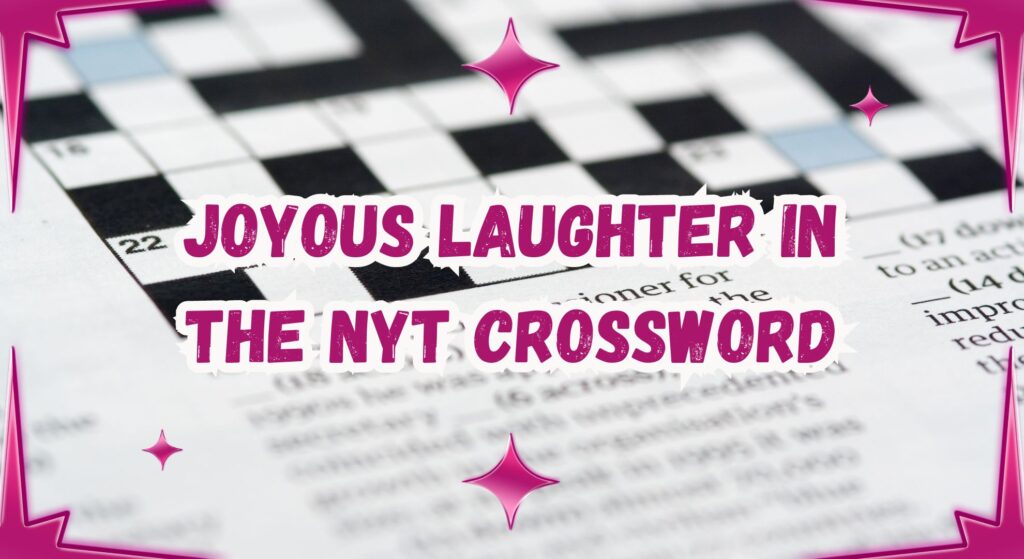The New York Times crossword puzzle is a beloved pastime for many. One of its themes is “joyous laughter,” which highlights the joy that puzzles can bring. This article explores the significance of laughter, the joy of solving crosswords, and how this particular theme plays a role in enhancing the crossword experience.
What is the NYT Crossword?
The New York Times crossword puzzle is a challenging word game published daily. Created by various crossword constructors, it has different themes, including humor, pop culture, and history. The puzzle is a mix of clues that require knowledge, wordplay, and logic to solve. Many people enjoy completing it as a way to relax, learn, and have fun.
Why Laughter is Important
Laughter is a natural response that can lift our spirits. It helps reduce stress, improve mood, and strengthen relationships. Studies show that laughter releases endorphins, the body’s feel-good chemicals. This makes people feel happier and more connected to others. Incorporating laughter into daily activities, like solving a crossword, can significantly enhance our overall well-being.
The Joy of Solving Crosswords
Solving crosswords brings joy to many. It encourages critical thinking and problem-solving skills. Each clue solved is a small victory that boosts confidence. The satisfaction of completing a puzzle can provide a sense of accomplishment. Additionally, working on a crossword with friends or family fosters social connections and shared laughter.
The Role of Humor in Crosswords
Humor is often a central theme in crosswords. Constructors use puns, jokes, and playful language to create clues that make solvers chuckle. These humorous elements can turn a simple puzzle into a delightful experience. When solvers encounter a funny clue or answer, it adds an extra layer of enjoyment to the challenge.
How “Joyous Laughter” is Represented
The theme “joyous laughter” can appear in various ways in the NYT crossword. This may include clues about famous comedians, funny quotes, or humorous situations. For example, a clue might reference a well-known joke or a comedic movie. These connections create a lighthearted atmosphere, reminding solvers of the joy that laughter brings.
The Community of Crossword Enthusiasts
Crossword enthusiasts often gather to share their passion for puzzles. Online forums, social media groups, and local clubs provide spaces for fans to discuss strategies and share tips. This sense of community can amplify the joy of solving crosswords, as members bond over their shared love for humor and wordplay.
Tips for Solving Crosswords
For those new to crosswords, it can be helpful to start with simple puzzles. As confidence grows, tackling more complex ones becomes easier. Here are some tips:
- Read all clues: Some clues may connect with others.
- Use crossings: Fill in letters from intersecting answers.
- Think about puns: Many clues rely on wordplay.
- Practice regularly: The more you solve, the better you become.
These strategies can enhance the experience, making solving crosswords more enjoyable.
The Benefits of Crossword Puzzles
Crossword puzzles offer numerous benefits beyond just entertainment. Here’s a table outlining some key advantages:
| Benefits | Description |
|---|---|
| Mental Stimulation | Engages the brain, improving memory and cognitive skills. |
| Stress Relief | Provides a fun way to relax and unwind. |
| Social Interaction | Can be enjoyed with friends or family, fostering connections. |
| Learning Opportunity | Introduces new words and concepts. |
| Sense of Accomplishment | Completing puzzles boosts confidence and satisfaction. |
The NYT crossword puzzle, with its “joyous laughter” theme, highlights the importance of humor and joy in our lives. Engaging with puzzles not only sharpens our minds but also enriches our spirits through laughter and connection. Whether solving alone or with others, the joy of laughter makes the experience truly rewarding.



